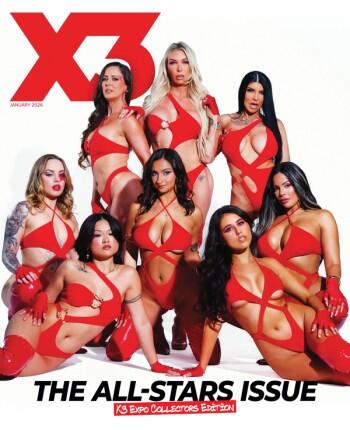Do you want to know the secret of writing a news release that will get published? Here it is: My secret for publicity success, developed from rigorous self assessment, after having sent out over a million faxed news releases on behalf of over 2,000 clients: "Tell me a story, give me a local news angle, touch my heart (make me laugh or cry), hit me in my pocketbook, make my stomach turn over, or grab my gonads." Do this as many times as possible in a one page news release in 30 seconds or less and you will succeed in getting publicity.
A few years ago I spoke at the National Public Relations Society meetings in Omaha. I found out that most publicists at most big PR firms don't have a real clue about how to write a news release to get news coverage. They write corporate fluff. Rarely do you see them create something that makes an editor drop what he’s doing and pick up the phone and call. And yet this is what you want an editor to do.
Few people who write a news release really think about what they want the editor to do after they receive and read a news release. I’ve been sending out news releases for people for almost 22 years, and most of the people who come to me initially write detailed book reviews or commercial news and web site announcements, not short ideas for articles intended to attract editors’ attention and get a dialog going that results in a feature story published. I often have to tell them to start over or shift gears.
A lot has to do with the content and quality of the book, product service or web site, but let's just assume that you've written the be-all, end-all of whatever subject in your field. This is the ultimate sensation. The only thing anyone will ever need or want. You're all charged up and ready to go. Now what... A Publicity Plan! Yes! A Publicity Plan.
First, establish your goals for the release. Write them down. Memorize them. Sleep on it. Wake up and think about them some more. Remember you have to integrate your marketing with your PR and keep it all within your budget. So identify what you have available and write down how much you want to spend -- and on what -- and when -- and with whom. Let's assume your goal is getting the word out about your product. It could be an initial announcement. It could be part of a year-long monthly campaign to a targeted media list (again and again to get name recognition).
Look at your schedule and check to see the task at hand. You want to get an article published in as many places as possible, to feed sales, acquire name recognition, drive web traffic, all of the above, or whatever. These are common goals. Now it’s time to be more specific. Narrow your options and tighten the true alternatives you wish to seriously consider. Think strategically. Narrow the goals and keep it as simple as can be. Whatever your specific publicity goals, you need to be mindful of the types of news releases that can be written:
- Print releases for feature stories
- Op-Eds Tips articles
- Event announcements
- Radio and TV interview releases
- Product or services releases
- Query letters
- Internet News Releases
- E-mail news releases
All these can produce publicity success. But writing each type of release entails relaying different information into a different format and style of presentation. Each release has a different purpose and asks the editor or producer to take a different action. And doing any of these well in order to succeed is a daunting challenge.
Every year I complete a qualitative review of our custom news distribution and the relative success people have been having in getting published as a result of sending fax and e-mail news releases. We analyze this data to see what works and what doesn’t work. We ask our clients what got published and where, and how much publicity or success they experienced as a result. While this is by no means statistically definitive, it is nonetheless useful.
We've seen one page releases sent to targeted media lists result in successful publicity (defined loosely as having resulted in either wide national publicity, a significant number > 35, top national interviews or bookings, or profit) for book authors, publishing companies, product firms, and government agencies, whose one-page news releases took one of the following approaches.
So no matter what type of news release you write, you will increase your chances of success if it incorporates one or more of the following. Here's what appears to be working the best: · human interest angles -- particularly with heartwarming anecdotal stories that reveal deep emotion or feelings with bright, colorful word pictures, and enriched sensory experience interpersonal relationships on difficult or controversial issues -- focus on love, sex, money, communications between men and women, parents and children, companies, and employees, government and individuals, tips articles advice and tactics excerpted from books, ten commandments, ten tips, etc. unusual events -- unique personal accomplishments, unusual creative ideas, humor and wisdom, fun and tragedy, really new and unique products or books Internet innovations and developments, politically and socially important editorial tie - in articles, holiday and event tie in articles. At least in my humble opinion, for those of you writing news releases or seeking publicity, your chances of success are likely to be increased if you follow one of these formats. You will compete against everyone else vying for attention, and you have to distinguish why your release is worth publishing over others.
You will maximize your success if you give the editor a "local news angle". Localizing news releases maximizes the publication of your release in weekly and daily newspapers. The easiest publicity to get is the announcement of a local event with a distinct local human interest angle. You don’t have to do the editors work for him, but the idea that the news release can be easily adapted to appeal to local needs must be very clear.
Sometimes getting national publicity is harder, especially in mainstream publications. You need to have a news angle that has some interest at a national level. You also will compete against everyone else vying for attention in the nation, and you have to distinguish why your release is worth publishing over others. You can make your job easier and be more successful by breaking your national media lists into geographically distinct areas and localizing the release. Even once you've identified your target media, settled on a type of news release, it all comes down to writing the actual release. Assuming you are aiming at print (radio/tv releases are a different animal) -- here's my advice. Bottom line -- find out what works specifically in the media you want to be in and use my special simple technique for publicity and news release success.
Identify, Imitate and Innovate
Go to a newsstand, and pick up the latest issues of every relevant magazine or publication you can find. The ones you want to be in. Then dissect each magazine for book articles. Use yellow stickies, or cut these out and make a scrapbook. Study the publications closely and see how they write book articles and reviews. Make a list of the headlines. Study the style, length, focus, content, word choice. Then start writing by imitating the articles you see. Remember most of the small articles (which are the easiest to get published) are one page or 200 words.
Then Innovate it. Re-write it fifteen times. Make it Short and Snappy. Vary the character of your news release to the media you are aiming at. You've written the end all of all books in the field. Or you’ve created the best product in the world. This is the ultimate sensation. The only book or product anyone will ever need. Get enthused. Now tell people why you are enthused in 150 to 200 words. Read it out loud as if you were live on the air -- see if it sounds good.
By the way, good short articles in newspapers and magazines are often read on radio stations and on talk shows every day, especially on morning radio talk shows. This has happened to me. Listen closely when it happens. Remember what the radio announcer is doing. He's reading a paper or magazine on the air. Wow -- a force multiplier effect. Like being seen on Oprah and getting asked to do an interview with People magazine. It also happened to my client Ms. Karen Derrico, author of Unforgettable Mutts. She did an interview on a small radio station in New York City, and was heard by William Safire, who then wrote about the Million Mutt March on Mother’s day in Washington DC in his column in the New York Times.
A news release has to sing to you before you send it to a publisher, and the best way I know to make it right is to follow in the footsteps of the successful before you.







